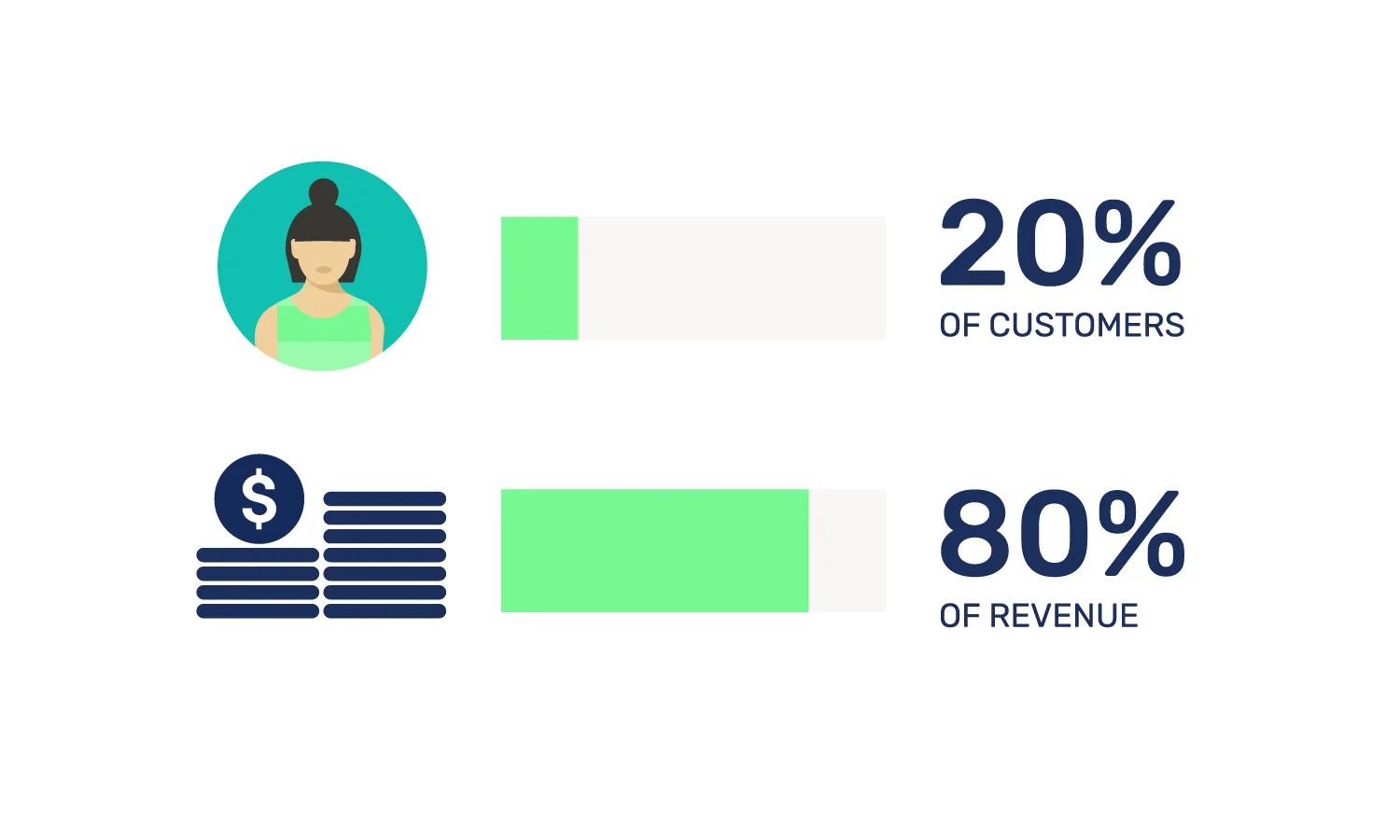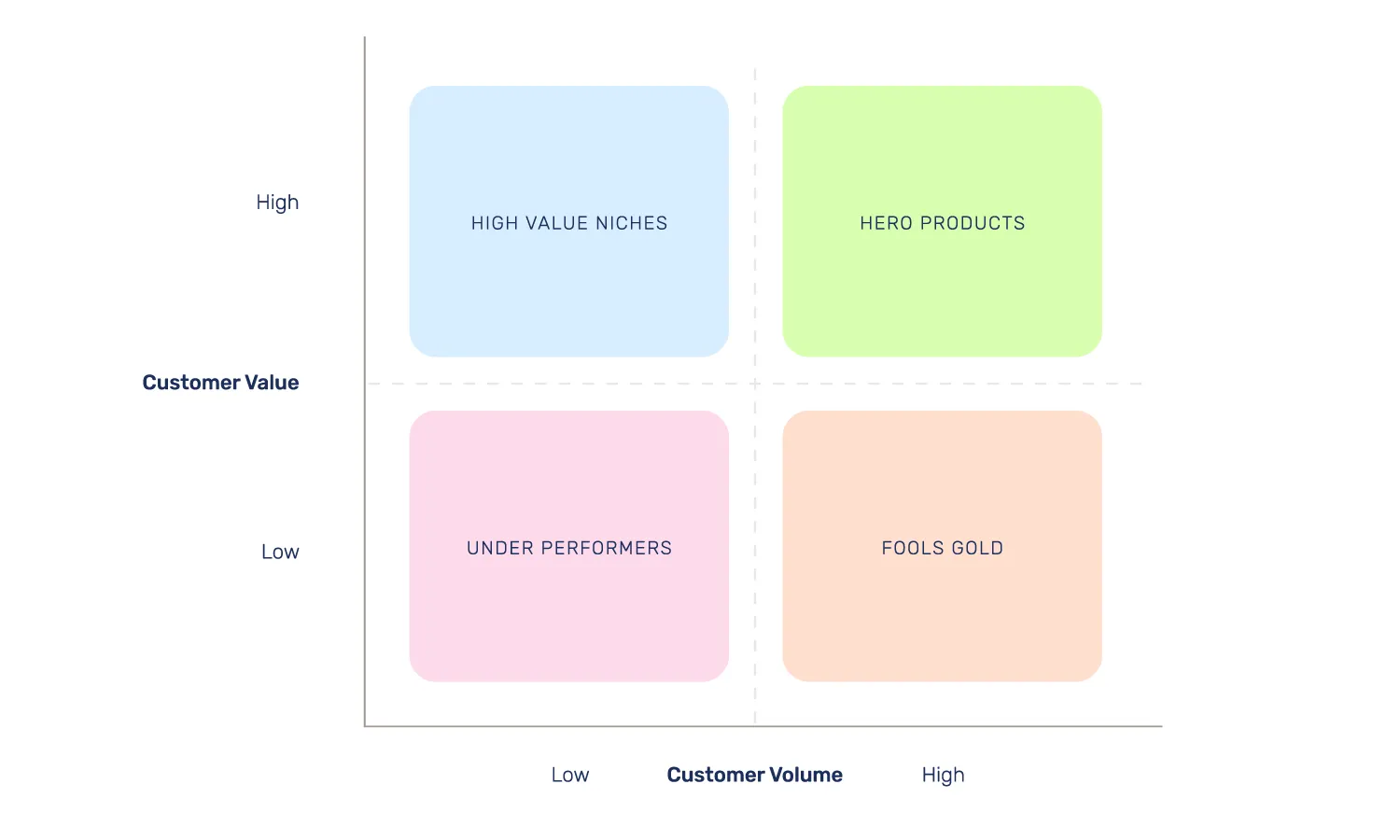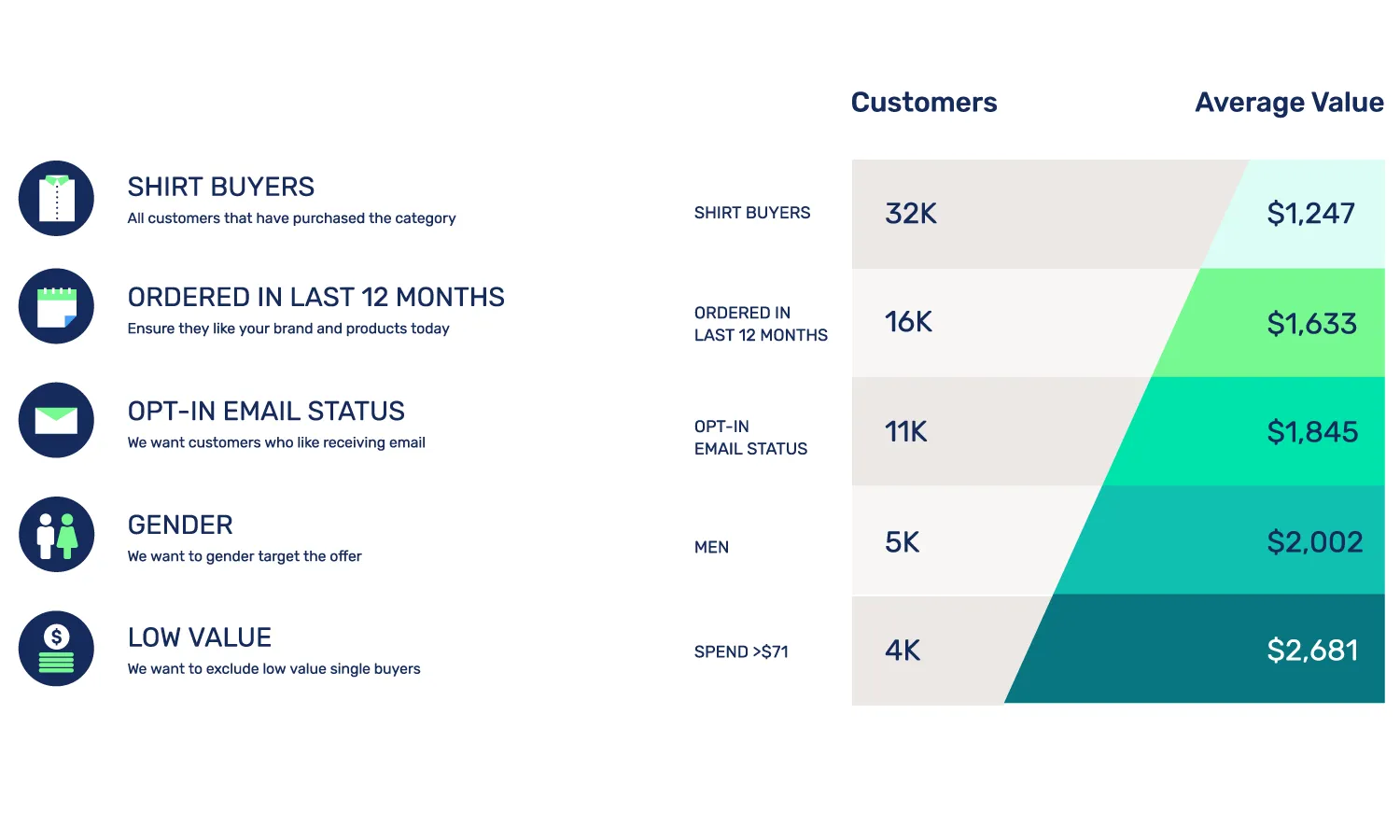August 16, 2019
4 steps to customer acquisition using data analytics
By now, you’ve probably heard the phrase, “the customer is king.”
While most successful businesses understand who their customers are and how to target similar audiences for customer acquisition, the fact is that not all customers will provide the same value to your business.
In other words, not all customers can be kings. Some are dukes, barons, and esquires. Some make many high-value purchases over the course of their customer lifecycles, while others make small, one-time purchases and never buy again.
This disparity in customer value is known as the Pareto Principle or the 80:20 Rule.
Massively common in brands with mid-to-high price points, the Pareto Principle occurs when 80 percent of a business’s overall revenue comes from only about 20 percent of their customers. For example, the specialty snowsports brand Spyder demonstrated this rule almost perfectly, with 81 percent of their revenue coming from 20 percent of their customers.
For brands that follow this 80:20 Rule, customers in the top 20 percent are worth 16x more than those in the bottom 80 percent.

Knowing that not all customers are born equal—and that consumers today tend to be savvier, more distrustful of brands and altogether less loyal than they used to be—marketers need to start thinking more strategically about their customer acquisition strategies.
By thinking beyond the demographics of your overall customer base and, instead, optimizing your marketing efforts to focus on only acquiring customers like the top 20 percent, you can not only reduce acquisition costs, but also gain more valuable customers with longer-term potential for your business.
So what does this mean for your customer acquisition strategy?
Many businesses attract first-time buyers by delivering targeted paid ads to lookalike audiences, or audiences with similar interests and demographics as their current customers.
But here’s the mistake you’re probably making: You’re building your lookalike audiences based on your entire customer base, including your low-value customers. This strategy dilutes the return you get on your paid ad spend, because you’re also paying to advertise to those small, one-time buyers.
Instead, define your lookalike audiences based on your highest-value customers.
By only targeting your best customers — the kings — you’ll see significant improvements in campaign performance and business growth.
Here’s our step-by-step guide for using data analytics to build high-value lookalike audiences and supercharge your customer acquisition strategy.
Step 1: Identify your hero products for customer acquisition.
Some products are better than others for attracting new, long-term customers. By identifying the products that your customers most frequently purchase first, you can gain a better understanding of what attracts your ideal first-time buyers.
PRO TIP: Before you start, think about the level of product taxonomy you should use for your analysis.
If you try to get too granular by comparing individual products, you’ll end up creating too many small segments to analyze and the campaign setup costs will hinder your yield. On the other hand, categorizing products too generally (e.g. men’s vs. women’s), reaps results that are too bland to be actionable.
Once you’ve decided how best to categorize your products, start by ranking each product category by the volume of customers who purchased them first. Then, measure the historical and future value of these customers.

High Value & High Volume: Hero Products
The first priority for your analysis are product categories with an above-average volume of first-time purchases and an above-average customer lifetime value.
For example, if sports jackets are the product that is most commonly purchased first and those customers later go onto become high-value repeat customers, then sports jackets provide the best opportunity for customer acquisition.
High Value & Low Volume: Niches
Secondly, analyze the products with below-average first-time purchase volumes and high customer value. These niche products provide a compelling opportunity for targeted acquisition.
Often, these niches are expensive products that fall somewhat on the edge for the brand. These products can result in higher-than-average cost-per-acquisition (CPA), but because the lifetime value of these customers tends to be significant, they yield an attractive return on ad spend (ROAS).
Low Value & High Volume: Fool’s Gold
As you’re doing your analysis, you may notice some products that are often purchased first by customers who go on to have very low lifetime value.
Be wary of these products.
They may be useful for attracting many new customers to your brand, but if they’re only attracting one-time purchases, then creating campaigns around these products probably isn’t the smartest use of your paid ad budget.
Low Value & Low Volume: Poor Performers
Lastly, consider the products with below-average value and below-average volume. Avoid using these poor performers for customer acquisition, so you can preserve your budget for products that attract higher-value customers at a greater volume.
Mind you, that’s not to say that these products do not have an application for customer cross-selling, upselling, or retention—they’re just not effective for driving the first purchase.

Now that you’ve compiled a shortlist of your best products for customer acquisition, it’s time to look a little deeper to understand each products’ current ability to drive loyal, repeat purchasers.
Although this step is not mandatory, here’s a great place to start: Look at the current churn risk and predicted 12-month spend to gain critical insight into the customers who have purchased these products first. By binning churn and future spend into macro groups like high churn risk and predicted spend >$500, you can more easily analyze which products have risky customers and potential high-value customers.

In this example, you can see that customers who purchase a skincare product first have a high churn risk of 89% and are unlikely to spend more than $500 in the next year.
Try to avoid products with a high churn and low future spend. Instead, build your lookalike audiences around groups with higher conversion to second order; in the above example, the top six categories to focus on are shirts, sports shirts, denim, sweaters, dress shoes, and leather jackets.
Step 2: Select your highest value customer audiences for each hero product.
Now you know the product categories that most commonly acquire high-value customers. You also know that a small number of customers make up a large amount of your revenue.
The next step, then, is to analyze the customers who’ve purchased your targeted acquisition products and build lookalike audiences around their profiles.
First, build a segmented list of all purchasers of a target category. Then, layer on additional variables to improve the audience’s quality and value. Common value-creating attributes include:
- One-time buyers: Exclude customers who’ve only purchased once.
- Gender: Does the hero product apply to both genders — or do you intend to personalize the creative? If so, include gender.
- Email engagement: Only include customers who are currently opted-in to marketing emails from your company. This often correlates with loyalty and value.
- Recent purchasers: Make sure that you’re targeting customers who are still likely to be interested in your brand and products today.
As you continue to filter your customers based on these attributes, you’ll notice that the volume goes down each time, but the value goes up.

In this example, you can see that adding these variables to t-shirt-buying customers increased the average value from $1,247 to $2,681.
This group of 3.8k customers is the highest-value group of customers — therefore, building a lookalike audience using these customers’ characteristics is likely to get you the highest return on your ad spend.
By repeating this process across your best product categories and delivering paid ads linking to the individual category that converted the audience in the first place, you can capture more high-value, repeat customers and grow your revenue.
Step 3: Build high-value lookalike audiences from your high-value customer segments
Here are the 5 quick steps:
- Send the high-value customer segments to Facebook as custom audiences named by the product they were defined around (e.g. “High-Value Shirt Buyers”).
- Open Facebook Business Manager and navigate to the Audiences section.
- Pick your audience and select “Create Lookalike” in the Action menu.
- Choose your audience location and size.
- Click “Create Audience” to build your lookalike audience.
PRO TIP: Building multiple lookalike audiences at increasing sizes (e.g. 1%, 1-2% and 2-5%) can provide valuable insight into the size of your addressable market and how efficiently you can acquire market share.
By adding each of these audiences to an individual Ad Set under a campaign you can compare the CPA and ROAS of each audience.
Step 4: Target each high-value lookalike audience with creative for the product they were built around
Having a test and learn approach when setting up campaigns on Facebook can yield significant insights and opportunities for optimization.
Here are some simple tips to get you started:
- Keep each audience in a separate Ad Set so you can evaluate each one’s relative performance.
- Experiment with different placements and ad units by creating a separate Ad Set for each variant and audience combination in the campaign. Common tests include:
- Feeds vs. Stories
- Single Image vs. Video vs. Carousel
- Including multiple ads under each Ad Set can also provide you with valuable insights. Consider testing different images and calls to action.
The Takeaway
When you know that the top 20 percent of your customers are worth 16 times more than the bottom 80 percent, why waste your ad spend targeting low-value audiences?
With this level of customer segmentation, you can focus your ad spend on the customers who will love your brand the most and provide the highest return for your company.
But you don’t have to stop there. Once you’ve mastered the art of acquiring high-value customers through your hero products, you can begin using a similar process for cross-channel cross-selling. A Customer Data Platform (CDP) like Lexer makes it simple with comprehensive data enrichment tools, easily-accessed customer insights, and omnichannel targeting and measurement tools.
Schedule a demo with our team to see how this customer acquisition strategy using data analytics can be implemented in minutes.
Speak with our retail experts

